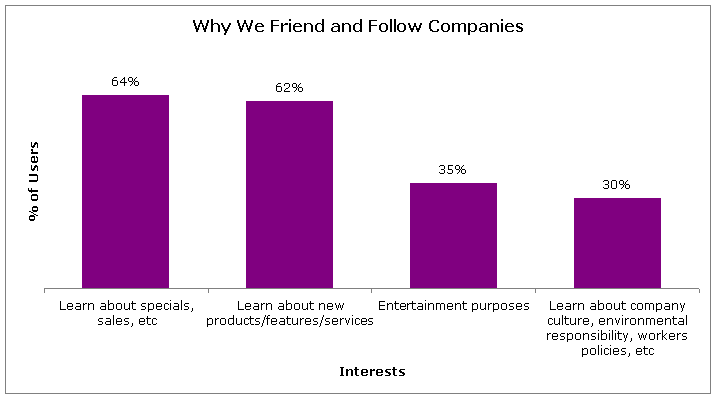Twitter is the shortest form of social media. Its messages are limited to 140 characters and usually consist of a brief comment or a URL. The messages, or “tweets”, are sent to everyone following the account. Companies use Twitter to generate website traffic, produce leads, and drive trials or purchase. According to Marketing Sherpa, people follow companies or individuals for specific reasons. The most common reasons are to learn about specials and new products, but also for pure entertainment or educational purposes.
Dell, who has close to 1.5 million Twitter followers, sells their refurbished products through their Twitter account @DellOutlet. In June 2009, Dell claimed that since launching their Twitter account in 2007, it has generated more than $2 million in sales directly attributable to Twitter. Another $1 million in sales came from people who started at Twitter and then moved to Dell’s website to buy a new computer. In December of 2009, the company released another statement to say that their global Twitter outreach has resulted in $6.5 million in sales, a number that includes purchases of new and refurbished equipment globally.
How did they do it? Looking at Marketing Sherpa’s chart, Dell is just telling their followers what they want to hear. Through Twitter, Dell announces the latest available refurbished equipment, and also sends coupons and clearance event updates to their followers.
- Glad you like! Thanks for the feedback!
- Hey
- 8Jitx6 Excellent article, I will take note. Many thanks for the story!


